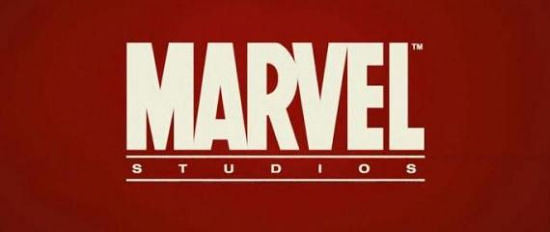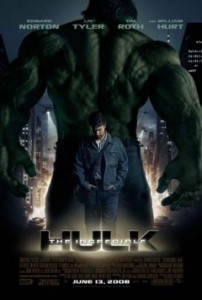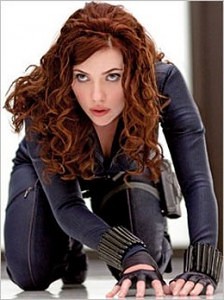In a multi-part series, Comic Book Film Editor William Gatevackes will be tracing the history of comic book movies from the earliest days of the film serials to today’s big blockbusters and beyond. Along with the history lesson, Bill will be covering some of the most prominent comic book films over the years and why they were so special. This time, we cover the event that changed the world of films forever–the formation of Marvel Studios.
 In 2004, films based on Marvel Comics characters were lighting up the box office. Once a laughing stock in Hollywood, where if a Marvel film actually got made it it was a flop, the Marvel characters became cinematic gold. However, through the deal Marvel made to get its characters on the screen, they did not have complete control of the films being made, only got a sliver of the profits and were at the whim of other studios as to when the films were scheduled. Marvel decided that it was time to take more control of its cinematic output.
In 2004, films based on Marvel Comics characters were lighting up the box office. Once a laughing stock in Hollywood, where if a Marvel film actually got made it it was a flop, the Marvel characters became cinematic gold. However, through the deal Marvel made to get its characters on the screen, they did not have complete control of the films being made, only got a sliver of the profits and were at the whim of other studios as to when the films were scheduled. Marvel decided that it was time to take more control of its cinematic output.
 Marvel brokered a loan with Merrill Lynch, Pierce, Fenner & Smith Inc. for $525 million dollars with the rights to ten movies as collateral. Today, this deal looks like a can’t miss proposition. But back then, it was incredibly risky. The main reason why it was so risky can be seen in the ten properties Marvel used as collateral/intended to make films out of. The biggest name of the ten was Captain America. The rest of the list were filled by B-list characters such as Nick Fury, Black Panther, Ant-Man, Cloak & Dagger, Dr. Strange, Hawkeye, Power Pack and Shang-Chi. The tenth concept was The Avengers, Marvel’s supergroup which likely would bear very little resemblance to comic book version of the team.
Marvel brokered a loan with Merrill Lynch, Pierce, Fenner & Smith Inc. for $525 million dollars with the rights to ten movies as collateral. Today, this deal looks like a can’t miss proposition. But back then, it was incredibly risky. The main reason why it was so risky can be seen in the ten properties Marvel used as collateral/intended to make films out of. The biggest name of the ten was Captain America. The rest of the list were filled by B-list characters such as Nick Fury, Black Panther, Ant-Man, Cloak & Dagger, Dr. Strange, Hawkeye, Power Pack and Shang-Chi. The tenth concept was The Avengers, Marvel’s supergroup which likely would bear very little resemblance to comic book version of the team.
Why? Because at the time the loan was taken out, the rights a majority of Marvel’s most popular characters, including many longtime members of the comic book Avengers, were owned by other studios. Fox owned the rights to the X-Men and Marvel’s mutant characters, Fantastic Four, and Daredevil. Sony/Columbia owned Spider-Man, Ghost Rider and Thor. New Line held the rights to Blade and Iron Man, Lionsgate the rights to the Punisher and Black Widow and Universal the rights to the Hulk. And the nature of these rights agreements, signed by a Marvel that was desperate to see its characters in movies, was that the studios would hold the rights as long as they kept making films with the characters, unless they were willing to give up the rights or sell them back to Marvel. This left Marvel with a catalog of little known characters and the prospect of and Avengers film that would not feature founding members Hulk, Iron Man or Thor.
Perhaps Marvel knew something the world didn’t, as the film rights to some of their characters started coming back to them. They got Iron Man back in 2005, Hulk and Thor in 2006, and Black Widow sometime after. While these weren’t Spider-Man or the X-Men, characters that might never revert back to Marvel Studios, they were characters that were more known by the general public than Hawkeye or Shang-Chi.
Marvel knew this and almost immediately put Iron Man into production. The film would be the first released through Marvel Studios’ distribution agreement with Paramount Pictures.
 Not that Iron Man was a slam dunk option. The property had spent 16 years in development hell before Marvel got the rights back, being dumped from Universal to Fox to New Line in the process. Directors ranging from Stuart Gordon to Nick Cassavetes had been attached to the project, but no one could seem to capture the essence of the character. However, this all changed when Marvel got its hands on it.
Not that Iron Man was a slam dunk option. The property had spent 16 years in development hell before Marvel got the rights back, being dumped from Universal to Fox to New Line in the process. Directors ranging from Stuart Gordon to Nick Cassavetes had been attached to the project, but no one could seem to capture the essence of the character. However, this all changed when Marvel got its hands on it.
The formula Marvel used to become a cinematic juggernaut is on display from the very beginning. It picked Jon Favreau for a director, whose limited resume at the time had fans complaining about the selection. For Tony Stark, a role that had caught the eye of such highly-paid luminaries as Nicolas Cage and Tom Cruise, Favreau hired Robert Downey Jr., an Oscar-nominated actor who was in the midst of climbing out of the deep hole his noted drug abuse had left his career in. Before the film came out, these seemed like incredibly risky choices. After the film came out, they were seen as strokes of brilliance.
The film also establish the trend of casting actors with Oscar-pedigrees in supporting roles, in this case Jeff Bridges as villain Obidiah Stane, Terrence Howard as best friend James Rhodes, and Oscar-winner Gwyneth Paltrow as assistant/love interest Pepper Potts. It also established that while Marvel would be making changes to the source material to make a better film, it would keep the tone of the work intact.
 The film features arms developer Tony Stark in Afghanistan, demonstrating a new weapon he designed. Things take a turn for the worse when his caravan is attacked and he is kidnapped. In the attack, a piece of shrapnel is lodged close to his heart, and he has to design a reactor to keep it in place. This reactor, which he wears on his chest, also comes in handy when he needs to build a suit of armor to escape his captors.
The film features arms developer Tony Stark in Afghanistan, demonstrating a new weapon he designed. Things take a turn for the worse when his caravan is attacked and he is kidnapped. In the attack, a piece of shrapnel is lodged close to his heart, and he has to design a reactor to keep it in place. This reactor, which he wears on his chest, also comes in handy when he needs to build a suit of armor to escape his captors.
Stark returns home a changed man. He decides to move his company away from building weapons of war while he continues to refine his armor to use as a weapon of peace. But doing away with weapons manufacturing does not sit well with Stark’s mentor and partner, Obidiah Stane, especially since he was illegally selling arms to terrorist organizations around the world. Stane decides to build an armor of his own and confront Tony in order to finish the job the terrorists started.
The film also started another trend in comic book films–the post-credits button scene. Iron Man ended with Nick Fury (Samuel L. Jackson) telling Tony Stark about an “Avengers Initiative.” Regular audiences were intrigued and comic fans swooned.
The film was an enormous success, both critically and financially. It made $585 million worldwide against an $140 million budget, allowing Marvel to pay back a big chunk of that loan almost immediately. It also set the world on notice–Marvel Studios would be a force to be reckoned with.
 The next Marvel hero to get the Marvel Studios treatment was Hulk. Marvel got the rights for the character back after Universal missed the deadline to put a sequel to Ang Lee’s 2003 Hulk film into production. Universal would still retain the distribution rights to the film, but the movie would become the second Marvel Studios production.
The next Marvel hero to get the Marvel Studios treatment was Hulk. Marvel got the rights for the character back after Universal missed the deadline to put a sequel to Ang Lee’s 2003 Hulk film into production. Universal would still retain the distribution rights to the film, but the movie would become the second Marvel Studios production.
While Hulk made a profit of about $107 million, Ang Lee’s artistic choices did not sit well certain fans or Marvel executives. So Marvel decided to take the risky choice of doing a reboot of a film that had just released only five years prior.
Actually, The Incredible Hulk was less a pure reboot than an ipso facto sequel to the popular 1970’s TV series, with tone and plot elements similar to that work. The film also could work as a soft reboot/sequel, as the character is in hiding in a foreign land at the start of the film, which was where the character was at at the end of Ang Lee film. That is, if you were eilling to ignore the changes made to the origin to fit with Marvel’s shared universe.
Louis Leterrier stepped into direct and Edward Norton signed on to replace Eric Bana as Bruce Banner as well as take a pass on Zak Penn’s screenplay (this will become more important later on). Once again, Marvel looked to the list of Oscar winners and nominees to fill their supporting roles, casting Oscar nominee Tim Roth as Emil Blonsky/Abomination and Oscar winner William Hurt replacing Sam Elliot as General Ross.
 The film tells that Bruce Banner was experimenting with gamma radiation in order to replicate the experiment that gave Captain America his powers during World War II (an easter egg later deleted from the film showed the Hulk passing by a block of ice in Antarctica that looked like it had Cap in it). Unfortunately, an accident exposes Banner to a great deal of radiation, cursing him to become a large green behemoth every time his heart rate goes up. Banner goes on the run to try and find a cure for his condition, while General Ross chases after him to bring him back as he considers the Hulk to be government property.
The film tells that Bruce Banner was experimenting with gamma radiation in order to replicate the experiment that gave Captain America his powers during World War II (an easter egg later deleted from the film showed the Hulk passing by a block of ice in Antarctica that looked like it had Cap in it). Unfortunately, an accident exposes Banner to a great deal of radiation, cursing him to become a large green behemoth every time his heart rate goes up. Banner goes on the run to try and find a cure for his condition, while General Ross chases after him to bring him back as he considers the Hulk to be government property.
Robert Downey Jr. turns up in the tag scene as Tony Stark, informing General Ross about the Avengers initiative, thereby officially creating the shared universe the Marvel films reside in.
The film was more of a conventional comic book film than Hulk–no split screens, no exploration of daddy issues–and was obviously intended to lead to a sequel. However it became the only Marvel film in release not to have one. The film was just about as much of a success as the 2003 version, and sequels were talked about, but none came from it as of yet.
Part of this was might be due Norton’s insistence on being involved in the writing. Norton was replaced in the role of Bruce Banner in The Avengers by Mark Ruffalo, and Norton’s wanting a hand in the creative side of the film was rumored to be the reason. However, Norton had company as being an actor that was replaced by Marvel.
 Iron Man 2 introduced James Rhodes’ alter ego War Machine into the films, but it was Don Cheadle, not Terrence Howard donning the armor. Marvel parted ways with Howard in October of 2008. Howard said in a 2013 interview, still stinging from the dismissal five years later, that Marvel came to him to force him to reduce his salary. Howard was the first person signed for the film, and therefore received the highest salary. He balked at the idea of a pay cut, so Marvel got someone else to play Jim Rhodes.
Iron Man 2 introduced James Rhodes’ alter ego War Machine into the films, but it was Don Cheadle, not Terrence Howard donning the armor. Marvel parted ways with Howard in October of 2008. Howard said in a 2013 interview, still stinging from the dismissal five years later, that Marvel came to him to force him to reduce his salary. Howard was the first person signed for the film, and therefore received the highest salary. He balked at the idea of a pay cut, so Marvel got someone else to play Jim Rhodes.
Howard blamed his ouster on a cash grab by Downey Jr. (“It turns out that the person that I helped become Iron Man, when it was time to […] re-up for the second one took the money that was supposed to go to me and pushed me out,”he said in the above interview), but other sources claim that Jon Favreau, who reportedly did not like working with Howard, was the “villain” in this piece. But, in the end, Marvel simply replaced one Oscar nominee with another, with Cheadle providing more in the role than I think Howard would, in my opinion.
Cheadle was not the only new face in the film, and not the only one who would have a bigger role to play in the cinematic universe.
 In this one, Tony is dealing with the repurcussion of announcing he was Iron Man at the end of the last film, a process made more difficult as he discovers that an element in arc reactor that keeps him alive is killing him. His life is further complicated by Ivan Vanko (Mickey Rourke), the son of a former partner of Tony’s dad who blames the Stark family in his family’s misfortune.
In this one, Tony is dealing with the repurcussion of announcing he was Iron Man at the end of the last film, a process made more difficult as he discovers that an element in arc reactor that keeps him alive is killing him. His life is further complicated by Ivan Vanko (Mickey Rourke), the son of a former partner of Tony’s dad who blames the Stark family in his family’s misfortune.
Vanko is aided by Stark’s business rival Justin Hammer (Sam Rockwell) who hopes to eliminate his main competition. Luckily, Tony has some new allies on his side as well, including his buddy Rhodey in a version of Stark’s armor dubbed War Machine and a seductive S.H.I.E.L.D. agent named Natasha Romanoff, a.k.a. the Black Widow played by Scarlet Johansson. The tag scene begins what would become the trend in these sort of scenes from then on. It features Agent Coulson (Clark Gregg) in the middle of the desert, finding what would be Thor’s hammer. From then on, the tag scene would act as a tease of the next film in the line.
The film didn’t do as well in reviews (although, it had a hard act to follow) but did well enough financially to get a sequel. We’ll talk about that in two installments, but next we wrap up Phase I when Cap and Thor join the party, and The Avengers are finally united.





RT @FilmBuffOnLine: HISTORY OF THE COMIC BOOK FILM: Man And Iron Man: http://t.co/boCthcWNZo
[…] Repaso a los primeros pasos del MCU de FilmBuffOnline […]